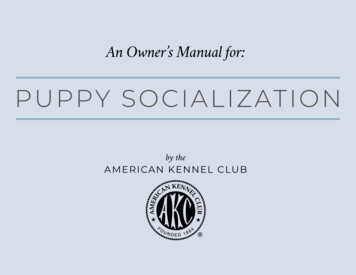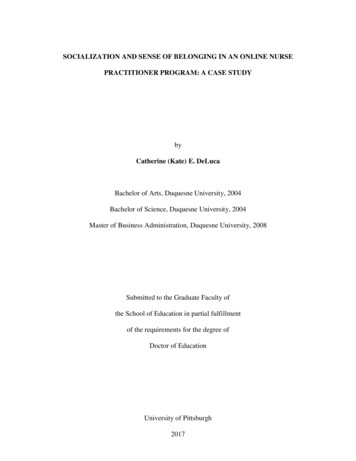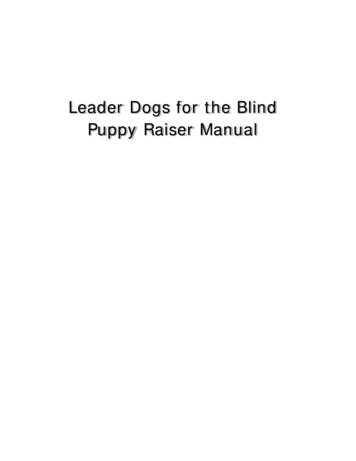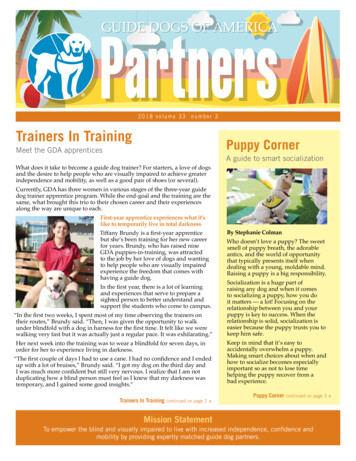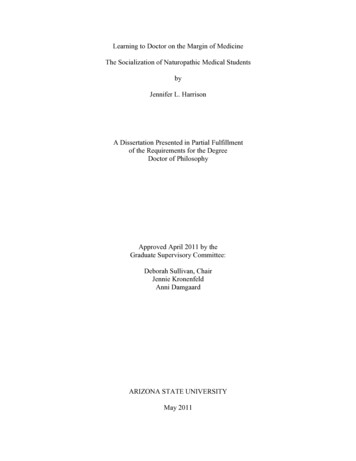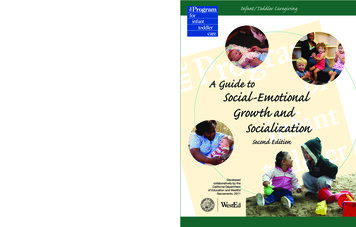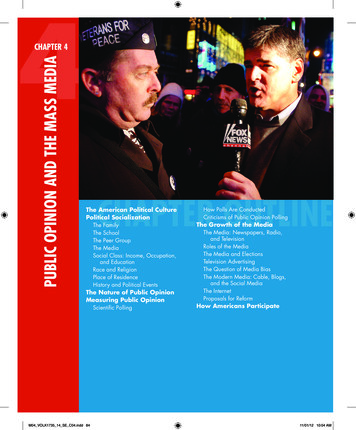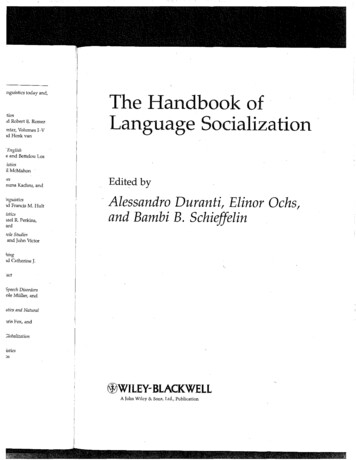
Transcription
nguistics today and,'tionLd Robert E. Remezmtax, Volumes I-V1dHenkvanThe Handbook ofLanguage Socialization'Englishe and Bettelou LosisticsilMcMahon'esnuna Kachru., andEdited by:nguistics1d Francis M. HultAlessandro Duranti, Elinor Ochs,and Bambi B. Schieffelinis ticstael R Perkins,ard oleStudiesand John Victorhing1d Catherine J.'act5peech Disordersole Miiller, andsties and Naturaluis Fox, and;zobalizationisticsOS@WILEY-BLACKWELLA John Wiley&. Sons, Ltd., Publication
This edition first published 20122012 Blackwell Publishing Limited ContentBlackvvell Publishing was acquired by John Wiley & Sons in February 2007. Blackwell's publishingprogram has been merged with Wiley's global Scientific, Technical, and Medical business to formWiley-Blackwell.Registered OfficeJohn Wiley & Sons Ltd, The Atrium, Southern Gate, Chichester, West Sussex, P019 8SQ UnitedKingdomEditorial Offices350 Main Street, :Malden, MA 02148-5020, USA9600 Garsington Road, Oxford, OX4 2DQ UKThe Atrium, Southern Gate, Chichester, West Sussex, P019 SSQ UKFor details of our global editorial offices, for customer services, and for information about how toapply for permission to reuse the copyright material in this book please see our websiteat -w-ww.wiley.com/wiley-blackwell.List of IllustrationNotes on ContribtAcknowledgment!The right of Alesandro Duranti, Elinor Ochs, and Bambi B. Schieffelin to be identified as the authorsof the editorial material in this work has been asserted in aCcordance with the UK Copyright,Designs and Patents Act 1988.All rights reserved. No part of this publication may be reproduced, stored in a retrieval system, ortransmitted, in any form or by any means, electronic, mechanical, photocopying, recording orotherwise, except as permitted by the UK Copyright, Designs and Patents Act 1988, without theprior permission of the publisher.Wiley also publishes its books in a variety of electronic formats. Some content that appears in printmay not be available in electronic books.Designations used by companies to clistinguish their products are often claimed as trademarks. Allbrand names and product' names used in this book are trade names, service marks, trademarks orregistered trademarks of their respective owners. The publisher is not associated vvith any productor vendor mentioned in this book. This publication is designed to provide accurate andauthoritative information in regard to the subject matter covered. It is sold on the understandingthat the publisher is not engaged in rendering professional services. If professional advice or otherexpert assistance is required, the services of a compet t professional should be sought.Library of Congress Cataloging-in-Publication DataThe handbook of language socialization I edited by Alessandro Duranti, Elinor Ochs, andBambi B. Schieffelin.· p. on.- (Blackwell handbooks in linguistics)Includes bibliographical references and index.ISBN 978-1-4051-9186-9 (ill . paper)1. Language acquisition-Social aspects. 2. Socialization. 3. Language and languagesStudy and teaching. I. Duranti, Alessandro. II. Ochs, Elinor. III. Schieffelin, Bambi B.P118.H3485 2012306.44-dc2220110087921IIl!\j llPart I InteractioThe CulturalPENELOPE BRI3 Preverbal ]nf;AKIRA TAKAD4 Language So LoURDES DE2Part II56789A catalogue record for this book is available from the British Library.This book is published in the following electronic formats: ePDFs 9781444342871;Wiley Online Library 9781444342901; ePub 9781444342888; Mobi 9781444342895Set in 10/12pt Palatino by Tappan Best-set Premedia LimitedPrinted and bonnd in Singapore by Markono Print Media Pte Ltd1 2012The Theory oELINOR OcHS1011SocializaRethinking B0LGASOLOMLocal Theori1AMY PAUGHLanguage SoADRIENNE L(Language SoPEGGY J. MILLanguage SoLEsLIE C. MeLiteracy SociLAURA STERILanguage ScTANYA STIVE
iemicanguage andOxford: Oxfordapragmatic16 Peer LanguageSocializationogy of impoliteal of LinguisticEssential-Jew York:·eativity andAmericanalization into" A. Reyes and w English:·apology of Asian-Jew York:t episodes in'king oferaction.-100.Bunka (Language1ami Shoten.,n Introduction tobridge·rpretation of;peech situation,:ultural1-48.x:ism and theMatejka and I.dge,MA:egeo,D. W.)eating routines1guageeffelin and E.alization Across;e: CambridgeMARJORIE H. GOODWIN ANDAMY KYRATZISIntroductionAn essential feature of work in the language socialization paradigm is examininghow in becoming competent participants of their social group children (or othermembers) are socialized through language and to use language (Kulick andSchieffelin 2004: 350). Learning appropriate affective stances is an inoportantdinoension of becoming a competent social group member, as studies of language ·socialization are fundamentally concerned with how it is that novices acquire ahabitus or ways of being in the world (Kulick and Schieffelin 2004: 249); ratherthan asking how societies vary cross-culturally, the focus in language socializationstudies is on how specific affective alignments or positions come into being andare negotiated (Kulick and Schieffelin 2004: 351; see also Cook, this volume).Analysis of the acquisition of particular practices over tinoe is based on extensivelongitudinal ethnographic study of specifi : embodied language resources.Participants in the process of language socialization mutually shape one another;thus, in the family, children as well as parents are 'mutual apprentices' (Pontecorvo,Fasulo, and Sterponi 2001) to one another.Seminal studies in language socialization (Kulick 1992; Ochs and Schieffelin1984; Schieffelin and Ochs 1986) have addressed how more accomplished participants socialize novices, as, for example, in parent-child or teacher-student interaction. Work by Schieffelin (1990) and others (Burdelski 2010, this volume; Clancy1986; Rabain-Jamin 1998) has exanlined prompting as an important resource for'socialization to use language' (Schieffelin and Ochs 1986: 163), as well as socialization into particular relationships. In Kaluli a specific grammatical form, a:la:maand Literature.y Press.The Handbook of Language Socialization, First Edition. Edited by Alessandm Duranti Elinor Ochs, Bambi B. Schieffelin., 2011 Blackwell Publishing Ltd. Published 2011 by Blackwell Publishing Ltd.
366Social Orientationsor 'say like that,' is used to help establish the gender identity of girls. Generationalidentity of young children is established through the term o:mina, meaning 'havingchewed, give' (Ochs and Schieffelin 2006: 183). In Samoa, the term sau helps tobuild the directive meaning 'to come,' establishing the identity of the speaker asrelatively higher status than the addressee.Instead, here our focus is on how child participants, either members of a peergroup or sibling multiage group - socialize one another. Western-influencednotions of 'peer groups' have conceptualized children's groups as consisting ofsame-age peers who are not related to one another. However, many children'sgroups in neighborhoods and nonschool settings (Goodwin 1990; Thome 1993) inWestern cultures, and in non-Western cultures in which older children spend largeperiods of the day caring for younger kin (de Leon 2007; Reynolds 2002; Rogoff1981; see Goodwin and Kyratzis 2007 for a review), do not consist of same-agemembers or children unrelated to one another. We acknowledge that both 'peergroups' and 'sibling-kin groups' are important arenas where language socialization occurs, and include both in the scope of this chapter.Children's negotiations of how they stand vis-a-vis one another- that is, their'identities-in-interaction' (Antaki 1994; Antaki and Widdicombe 1998)- are maderelevant in the midst vf their naturally occurring conduct with one another. In thecourse of talk, as Pomerantz and Mandelbaum (2005: 153) argue, participantsachieve and renew their relationships with one another through the act of 'talkingand acting in ways that are recognizably bound with relationship categories.' Inthis chapter we investigate a number of systematic practices and resources throughwhich children in concert with one another build the phenomenal and socialworlds they inhabit as the situated product of interactive practices: evaluatingtheir playmates, ascribing particular categorizations to one's interlocutors, creating differentiation and hierarchy, constructing a pretend world, and using practices of language alternation.While evaluating group members through storytelling, assessments, insults,or categorizations of person, children take up either common or divergentstances towards the· target, socializing appropriate forms of behavior. Such practices thus lie at the heart of processes of achieving intersubjective understanding(Goodwin and Goodwin 1987). In order to come to terms with these practices,we investigate evaluative commentary as well as members' categories (whichoften carry an affective valence) that occur in the midst of such activities. Wealso explore how children utilize members' categories, as well as directives, asresources for building social organization in pretend play, and how childrenuse features of different registers, voices, and genres during play as means toboth explore and comment on social roles, categories, and relationships fromthe adult world and to negotiate social order (see also Aronsson, this volume).Finally, we examine how children growing up in multilingual communities makeuse of practices of language alternation to build opposition and aligrunents aswell as to define 'social places' (Schieffelin 2003: 158) for their language varietiesduring play.Evaluative Cotnll1In the midst of talk, peelcommentary to one an tin their larger social unrguistic practices such 'Pomerantz 1984), andredefine the soci;Jl situamaking evaluative coffilbound activities' or taking up stances wttthey not only ]ocate anate moral behavior, bu one another in the 1999, 2002) - an aggrEways of talking, beh 1992: 464).GossipWithin storytelling, Iin the local social gGoodwin (1990) an hood girls aged bettwo against one thmake use of multip'cal stories, and harparty that leads to Iaction agrunst theback. These are irrceming someone 1:is thought to res1.interactions, dealmeeting betweenResearching L181) discusses 't2denouement: 'itthird party unfaor imaginary v thatShuman(19American, and lthe role of tlcritical. Shuma
Peer Language Socialization 367girls. Generationala, meaning 'having' term sau helps toY of the speaker asmembers of a peerIVestern-influencedps as consisting of"' many children's90; Thome 1993) inhildren spend largenolds 2002; Rogoff:onsist of same-age:lge that both 'peerlanguage socializa ther- that is, their e 1998)- are madeone another. In theargue, participantsh the act of 'talkingship categories.' In:1 resources through10menal and social.ractices: evaluatingmterlocutors, creat-ld, and using prac3sessments, insults,Llllon or divergentehavior. Such practive understanding th these practices' categories (whichsuch actiVities. Weell as directives, asand how children; play as means torelationships fromsson, this volume).communities makeand alignments as: language varietiesEvaluative CommentaryIn the midst of talk, peers police the local social landscape and make evaluativecommentary to one another with respect to what they consider the valued signsin their larger social universe- ones that are linked to social status. Through linguistic practices such as gossip, assessments (Goodwin and Goodwin 1987;Pomerantz 1984), and storytelling, group members continuously define andredefine the social situation and hold one another accountable to it. Participantsmaking evaluative commentary link what Sacks (1972, 1995b) has called 'categorybound actiVities' or 'members' categories' with the target being assessed. Bytaking up stances with respect to the target or stance object (Du Bois 2007),they not only locate and reference the peer group's notion of culturally appropriate moral behavior, but also negotiate their alignments to one another and positionone another in the local social group or cornmuruty of practice (Bucholtz1999, 2002)- an aggregate of people who develop shared 'ways of doing things,ways of talking, beliefs, values, power relations' (Eckert and McConnell-Ginet1992: 464).GossipWithin storytelling, play, and gossip, peers learn appropriate ways of interactingin the local social group (Eder 1995; Goodwin 1990; Loyd 2011; Shuman 1986).Goodwin (1990) analyzes the 'he-said-she-said' gossip event in which neighborhood girls aged between 7 and 12 tell stories leading to future confrontations oftwo against one that reorganize and realign the local social organization. Girlsmake use of multiple types of stories -instigating stories, retold stories, hypotheticcal stories, and harvested parallel stories - to elicit a statement from an offendedparty that leads to her confronting an offending party (Goodwin 1990: 187) to takeaction against the offense of having said something about someone behind herback. These are important ways of dealing with real and imagined offenses concerning someone having put herself above others; failure to confront one's offenderis thought to result in loss of social face. The focus is on both prior and futureinteractions, dealing with what someone in fact said, or would say in a futuremeeting between the offended and offending parties.,Researching Latina gang girls in Northern California, Mendoza-Denton (2008:181) discusses 'talking shit/ a form of gossip that has an optional confrontationaldenouement: 'it is either a third-person account where the speaker portrays thethird party unfavorably or a narrative where one brags about one's own factualor imaginary victory against an absent one.' In the he-said-she-said disputesthat Shuman (1986, 1992) examined among a group of African American, EuropeanAmerican, and Puerto Rican inner-city junior high-school students in Philadelphia,the role of the instigator, rather than the original offending party, wascritical Shuman states (1992: 140): 'In many cases the message-bearer was held
368" Social Orientationsresponsible for instigating the conflict, and the antagonisms shifted from theoriginal offense to a challenge against the Eerson who was not entitled to talkabout someone else's offense.' In high-school years and beyond, responsibility forinstigating becom s a key issue when gossip tnrns into 'rumor' (Morgan 2002: 60).Evaldsson (2002), investigating gossip among working-class preadolescentSwedish boys, finds that boys' alignments of two against one (against girls as wellas boys) result in confrontations in the present encounter rather than in a futnreone. As in the Maple Street, Philadelphia boys' stories studied by Goodwin (1990),the child animated as principal character in a telling is present. Through practicessuch as format tying, boys demonstrate highly collaborative intimate stances insupport of talk by a group member about someone who positions her /himselfabove others. Evaldsson (2002: 211) finds that 'the participant structnre of thegossip telling itself simultaneously allows the boys to solicit support, seek affiliation, and strengthen solidarity- featnres prominent in all-female groups.' Becausethe party being talked about in a degrading fashion is present, he may counterthe negative asses,sment; nevertheless, each successive counter by the target leadsto further confirmations by others of their collective alignment against him. Boysthus can establish relations of power and hierarchy in the midst of collectivelyshowing support in aligning against a present target.Evaldsson's work problematizes easy gender dichotomies. However, offencesamong boys do not concern what an intermediary party reportedly said behindone's back, as occurs in grrls' groups. Rather, the social categories that are invokeddeal with male cultnral concerns: 'anxieties about being excluded, associated withphysical vulnerability, emotional weakness, and cowardice' such as crying,sulking, wetting one's pants, or calling for a teacher's intervention (Evaldsson2002: 199).AssessmentsBucholtz (2007: 378) has noted that discernment (Bourdieu 1984), or the ability todistinguish between what is desirable and what is not, is fundamental to groupsas a way to index social status. Goodwin's (2006) fieldwork among elementaryschool girls in Los Angeles aged between 10 and 12 found that peers hold oneanother accountable for recognizing the meaning of signs that index wealth, suchas cars that are luxurious, foreign travel, or elite sports, and being able to produceappropriate moves that show understanding of relative value within a languagegame.Newon (2006), studying assessments (Goodwin and Goodwin 1987; Goodwin2007; Pomerantz 1984) during storytelling among a multiethnic middle-classgroup of 14-16-year-old cheerleaders in an all-girl Catholic school in suburbanCalifornia, observed that girls create their own local culture by defining what toaspire to and what to avoid. Girls evaluated body image, physical and mentalability, maturity, and popularity. In small groups, grrls who produced selfdeprecations - negative assessments about themselves - received in responsemoves of disagreement (supportive commentary about the initial speaker).However, in ·largeframed with laugrForms of discerstudied a multiculcomputer club. HEties online as theyassessments that vstyle. Eckert's (19Erations) and bumcban Detroit foundMendoza-Dentoncomplex ideologidress, makeup, IAnalyzing the Jarthree Silicon Vall'popular' styles vBucholtz (2011) e:tnral styles of preEuropean Americin the San FranciiLooking at tesouthwest Germ romantic relationdeal with relativeand repulsion, siand the larger ere(2003: 386) notefwhich she argue'the accomplishrr(2003: 386) maintto the receiver msession and exerCritiques of gthat ranks them ('think she popuwhen critiquingtrendy clothing,date.' The prefacread the intentiothis case, wearirmaking such cl2Spreckels (20during their lei someone, with ·thinks he's listeJ
Peer Language Socializationshifted from theJt entitled to talkresponsibility for/[organ 2002: 60).tss preadolescent;ainst girls as wellr than in a future·Goodwin (1990),:hrough practicestimate stances inions her /himself: structure of thepport, seek affiligroups.' Because. he may countery the target leadsgainst him. Boysst of collectivelyowever, offencesedly said behindthat are invoked, associated withsuch as crying,1tion (Evaldssonor the ability to ental to groupsJng elementarypeers hold onelex wealth, suchable to producethin a language1987; Goodwincic middle-classJol in suburbanefining what toical and mentalproduced selfed in responsenitial speaker).369However, in ·larger groups negative assessments about nonpresent girls, oftenframed with laughter, were frequently ratified.Forms of discernment have also been investigated by Henderson (2009), whostudied a multicultural group of tweens aged between 10 and 12 in an after-schoolcomputer club. Henderson found that tweens explored a range of diverse identities online as they played 'Whyville.' They styled online avatars through forms ofassessments that were used to evaluate 'the good body' and a savvy Los Angelesstyle. Eckert's (1987) study of jocks (students oriented towards middle-class aspirations) and burnouts (students identifying with working-class culture) in suburban Detroit found polar differences in how adolescents style forms of coolness.Mendoza-Denton examined nortefia and surefia, embodied styles that indexcomplex ideologies through multiple semiotic resources of difference (music,dress, makeup, body image, and phonetic pronunciations) (2008: 208, 212).Analyzing the language and culture of South Asian American teens or 'Desis' inthree Silicon Valley high schools, Shankar (2008) compares hip, cosmopolitan'popular' styles with what popular teens term 'FOB' ('fresh-off-the-boat') styles.Bucholtz (2011) examined the semiotic practices used to construct the youth cultural styles of preppy mainstream white hip hop fans, and nerds among youth ofEuropean American descent at Bay City High, un urban multiracial public schoolin the San Francisco Bay Area.Looking at telephone conversations between 14-16-year-old girlfriends insouthwest Germany, Kotthoff (2010) found the valued signs of these girls wereromantic relationships with boys. She analyzed how girls socialize one another todeal with relatively unstable romantic contacts, characterized by both attractionand repulsion, simultaneously positioning themselves in their friendship groupsand the larger cross-sex social world as they discuss these relationships. As Eckert(2003: 386) notes, positioning can also be accomplished through compliments,which she argues constitute the 'verbal means by which girls monitor progress inthe accomplishment of new norms of feminine behavior and adonunent.' Eckert(2003: 386) maintains that 'sincere compliments to players in the market add valueto the receiver as evidence of her quality, and to the giver as evidence of her possession and exercise of cultural knowledge.'Critiques of girls who imagine themselves as occupying a particular categorythat ranks them above others are constructed through the use of mental-state verbs('think she popular' or 'think she cute'). For example, among a Los Angeles clique,when critiquing a girl named Janis for bragging about her Spice Girls artifacts andtrendy clothing, Aretha stated, 'Janis thinks she's popular because she stays up todate.' The preface 'she think' displays how the girls, as cognitively complex actors,read the intentionality or status claims that underlie the use of particular signs (inthis case, wearing clothes that are trendy) and assess the character of the personmaking such claims.Spreckels (2008), conducting a two-year study with German adolescent girlsduring their leisure activities, discusses a similar framing for complaints againstsomeone, with utterances such as 'He thinks he's X just because of Y': 'Now hethinks he's listening to rock music just because he listened to ACDC somewhere.'
370Social OrientationsMusic is important in the culture of German adolescents (and hence in identityconstruction). Knowledge of musical style (e.g. gangsta and hip hopper) is used toindex those who are hip (affiliate with the youth culture) from those who are not.Such framings as 'he thinks he's doing X' are often used to project the categoryof someone who is a 'wannabe' (as in 'wannabe hippie' or 'wannabe film star')and cannot appropriately occupy the category. Similarly, Henderson (2009), in herstudy of Southern California tw·eens who construct virtual-world identities whileplaying 'Whyville,' noted distinctions that children made between groupies('emos') and actual band members (someone who is 'rockish').Ritual insult and negative assessmentsEvaldsson (2005: 765-6) reviews work on ritual insulting (talk that concerns apejorative attribute of the target not known as literally true), including alternativeways that participants sequence next turns, pointing out that 'there is always adanger that the boundary between playful and real aggression will begin toblur'(Evaldsson 2005: 765). As physical fights are a possible next move to personalinsults (Kochman 1983; Labov 1972), jocular abuse is used to prevent aggression(Eder 1995; Rampton 1995) while laughter breaks tension. Evaldsson (2005: 769)sees insult as emerging from mocking, ridiculing, and gossiping, resulting fromgames as well as isolated insult sequences. Evaldsson (2005: 770) argues that fighting back and 'being able to take it' are important to everyday masculine experience (Danby and Baker 1998; Eder 1995; Morgan 2002; Thorne 1993), promoting'toughness' and competition (Evaldsson 2002; Willis 1981). Studying female peergroups in the Quartieri Spagnoli (inner city Napoli), Loyd (2011) found that5-12-year-old girls construct their moral and social order in everyday performances of argumentation. In response to living in a world where peers constantlymonitor and police each other in attempts to gain respect and rise in their dominance hierarchies, girls learn the art of quick, theatric1tl, witty comebacks to gainleverage in everyday relations.In her discussion of 'playing the dozens,' a form of ritualized (Labov 1972)insult, Morgan (2002: 58) finds that a particular format is used: 'Your mother (is) soadjectival . (that),' where the adjectival phrase is followed by a clause. Examplesinclude 'Your mother is so fat that when she sits on a quarter she gets two dimesand a nickel' and 'Your motheris so old that when she read(s) the Bible she reminisces' (Morgan 2002: 59). Insults not oruy allow practice of verbal skill; throughinsults peers learn the cultural categories that are relevant to their social group.In the activity of 'clowning,' older adolescent Latina gang girls studied byMendoza-Denton (2008: 187) make use of the structure 'Your (possession/relationof the interlocutor) is so (unflattering adjective) that (outrageous result)' to makecomparisons with one another; for example, 'Your mama is so tiny that she couldhang-glide on a dorito.' The retort to a clowning insult must be a funnier, morecreative and more daring insult than the first, improvised in the local interactionand targeting the co-participant's undesirable features. This practice is related toritual or mock insults in African American English as well as the vernacularMexican Spanish verbal art form albur, which typically entails double entendre:rhyming references188); for example, G'you?') Among Frenwhich makes use ofalso to tease and fli1Forms of social afare responded to wclass African Ame1someone of a predotarget of return codescribed Angela a'woman, nnable to ,Goodwin and Alinsuch insult sequen African American f'Clueless' Valley girroll, suck teeth, an!Children makecategory-bound actransgressors. Neggirls' groups, incbbehind people's be(not having Pokerrgenerally), havingbeing labeled a 'Gin school) were rimmigrant backg(Evaldsson 2005: ;1967: 237). Evaldwhich multipartyto ratify particulanew linked evaludisgusting. Evakcategories withoulive person descrpoint to imp licitaccomp \ish theirMembershiGoodenough's (Jidea that culturecedures, much lHarvey Sacks' f egorization devi
Peer Language Socialization 371nee in identity"per) is used to: e who are not.ct the category1abe film star')n (2009), in herdentities whileNeen groupieshat concernS aling alternativeere is always a' will begin toove to personal ent aggressionson (2005: 769)resulting fromgues that fight1sculine experi93), promotingng female peer11) found thatyday performeers constantly' in their dornilebacks to gaini (Labov 1972).r mother (is) soause. Exarnp ]esgets two dimesBible she remi1 skill; tluoughsocial group.iris studied byession/ relationesult)' to "make'that she could:t funnier, moreJcal interactionice is related tothe vernacularouble entendrerhyming references with 'ambiguous sexual irmuendo' (Mendoza-Denton 2008:188); for example, Guera, guera, LQuien te encurea? ('Blondie, Blondie, who'll disrobeyou?') Among French adolescents of Algerian descent, parental name-calling,which makes use of potentially face-threatening acts, is used not only to insult butalso to tease and flirt (Tetreault 2010).Forms of social aggression rather than verbal play can occur when ritual insultsare responded to with personal insults. Goodwin (2006) found that a workingclass African American girl (Angela) who directed a playful ritual insult tosomeone of a predominantly upper-middle-class clique could quickly become thetarget of return comments portraying being poor as a degraded status: girlsdescribed Angela as unable to find a job when she grew up, working as a cleaningwoman, unable to afford braces, needing to be on welfare, and without friends.Goodwin and Alim (2010) describe practices of 'transmodal stylization' duringsuch insult sequences. A member of the clique openly mocked what the targetedAfrican American girl was saying by using features of talk associated with white'Clueless' Valley girls while simultaneously producing stereotypical gestures (neckroll, suck teeth, and eyeball roll) associated with black 'ghetto' girls.Children make use of locally relevant and culturally specific categories andcategory-bound activities to provide negative depictions of those positioned astransgressors. Negative category-bound activities in Evaldsson's (2007) sh\dies ofgirls' groups, including fighting, blaming, exploiting others, lying, and talkingbehind people's backs, were associated with the category 'bad friend.' Being poor(not having Pokemon cards, wearing old clothing, or lacking material goods moregenerally), having limited Swedish language proficiency, dressing like a girl, andbeing labeled a 'Gypsy' (rather than the in-group label 'Romany' commonly usedin school) were negative person descriptors among boys of working-class orimmigrant background in multietlrnic elementary school groups in Sweden(Evaldsson 2005: 771). Such terms were used during character contests (Goffman1967: 237). Evaldsson (2005) closely examines the sequential environments inwhich multiparty consensus (see also Evaldsson 2002; Goodwin 1990) is createdto ratify particular depictions, tluough upgrades, laughter, recycles, repetitions,new linked evaluations, and so on that frame the acts of the offending party asdisgusting. Evaldsson' s point is that we cannot ascribe meaning to members'categories without conducting extended fieldwork. Assessment adjectives, pejorative person descriptors, and negative categorizations of activities and actors allpoint to implicit cultural values that the children invoke and orien:t to as theyaccomplish their alignments to one another in the interactionMembership CategorizationsGoodenough's (1965) notion of identity as situated, local, and occasioned and hisidea that culture consists of an underlying body of structures, practices, and procedures, much like the grammar of a language (1981: 102-3), was influential inHarvey Sacks' formulati
well as to define 'social places' (Schieffelin 2003: 158) for their language varieties during play. Evaluative Cotnll1 In the midst of talk, peel commentary to one an t in their larger social unr guistic practices such ' Pomerantz 1984), and redefine the soci;Jl situa making evaluative coffil bound activities' or taking up stances wtt


